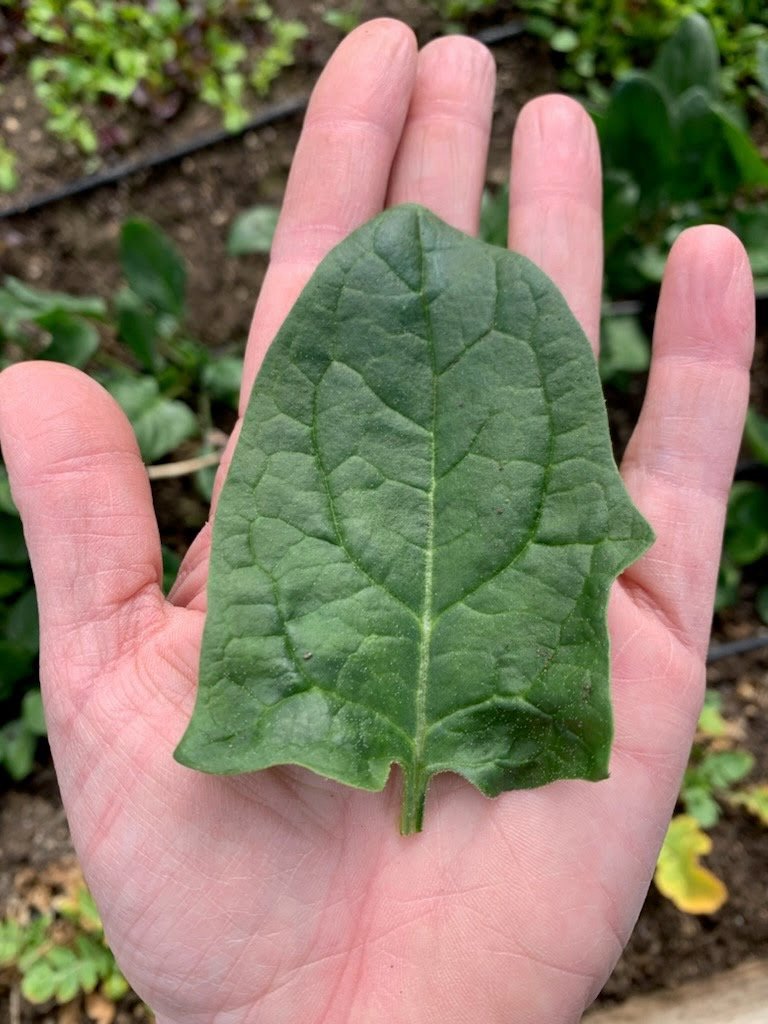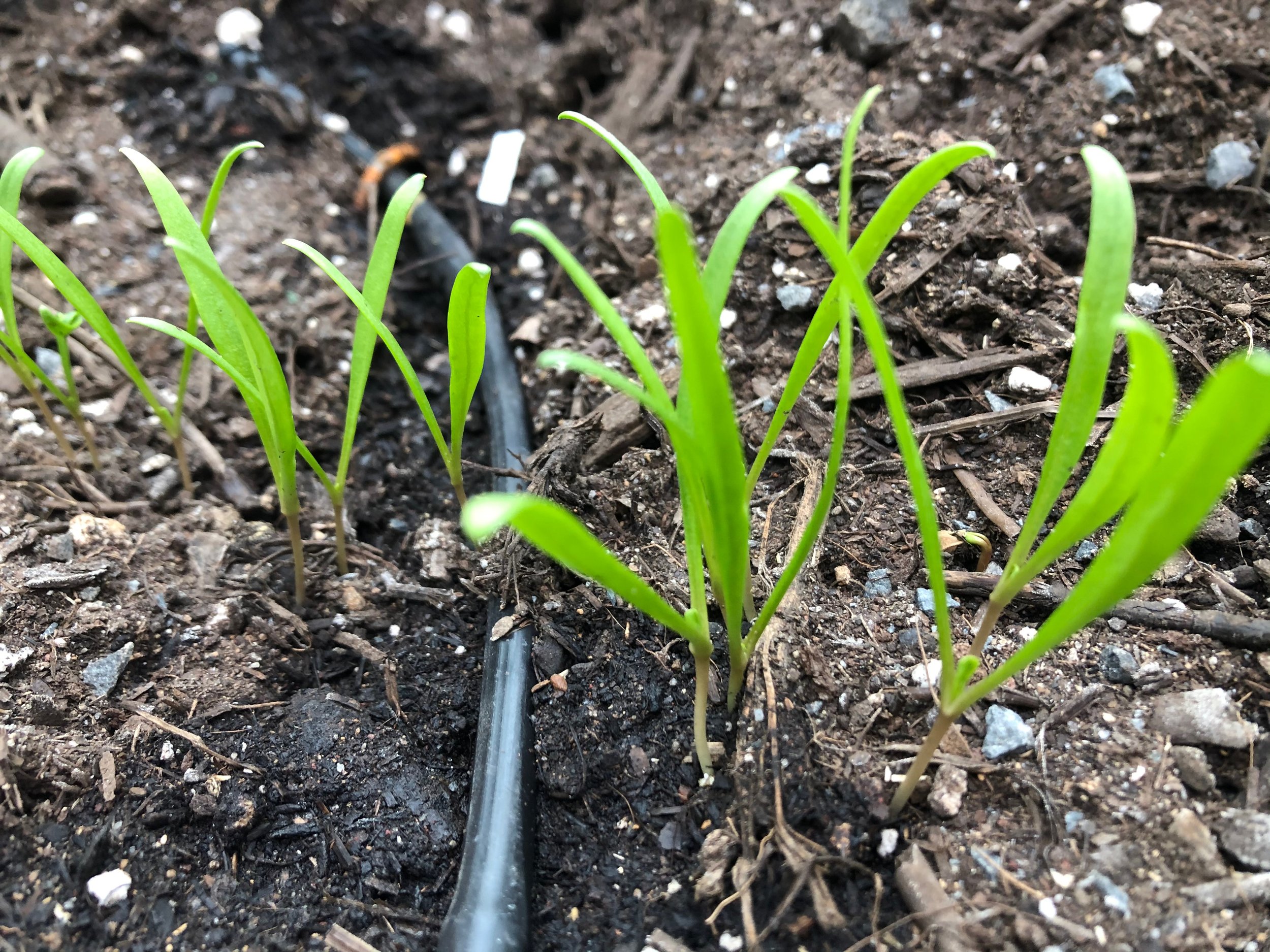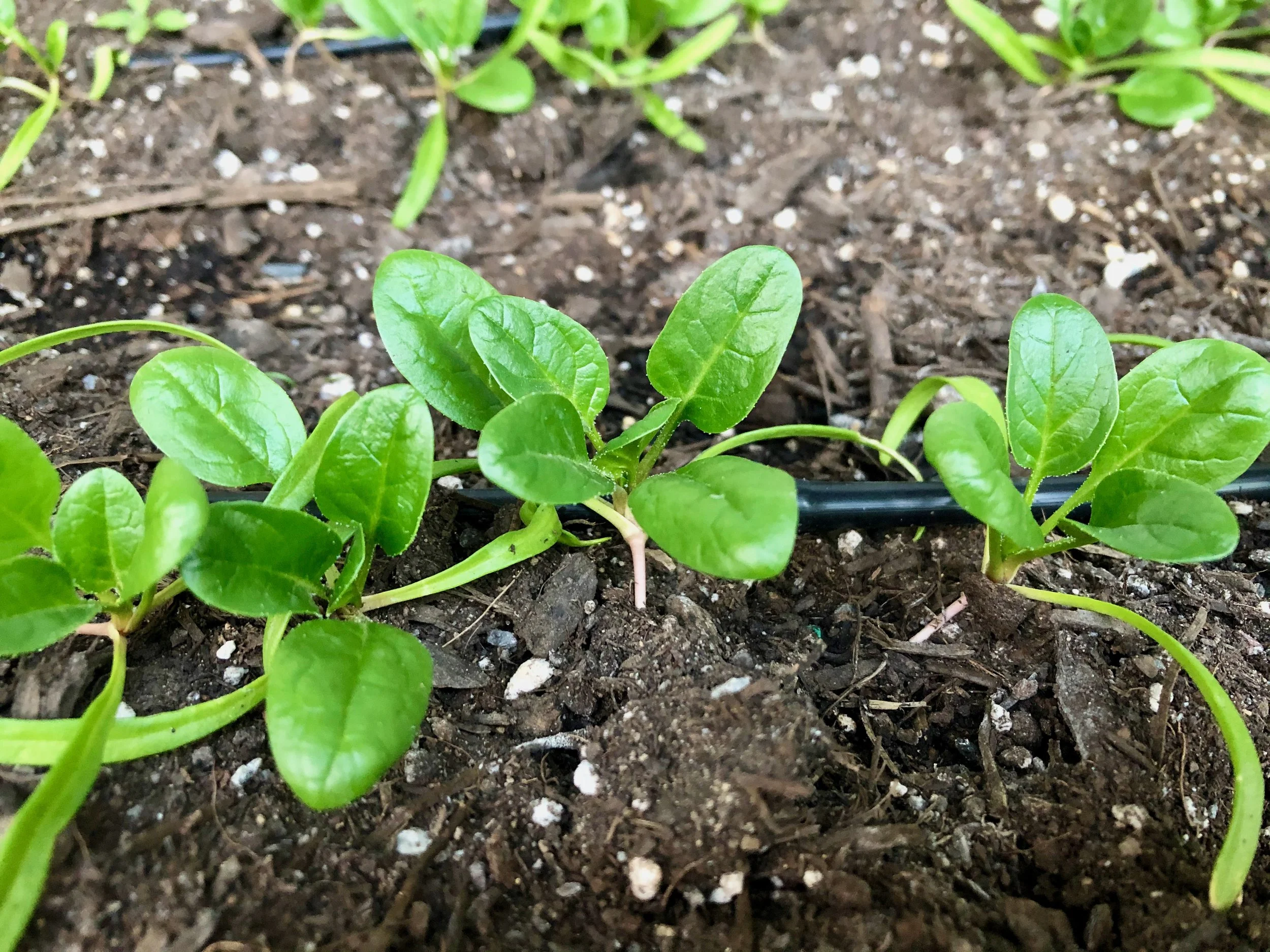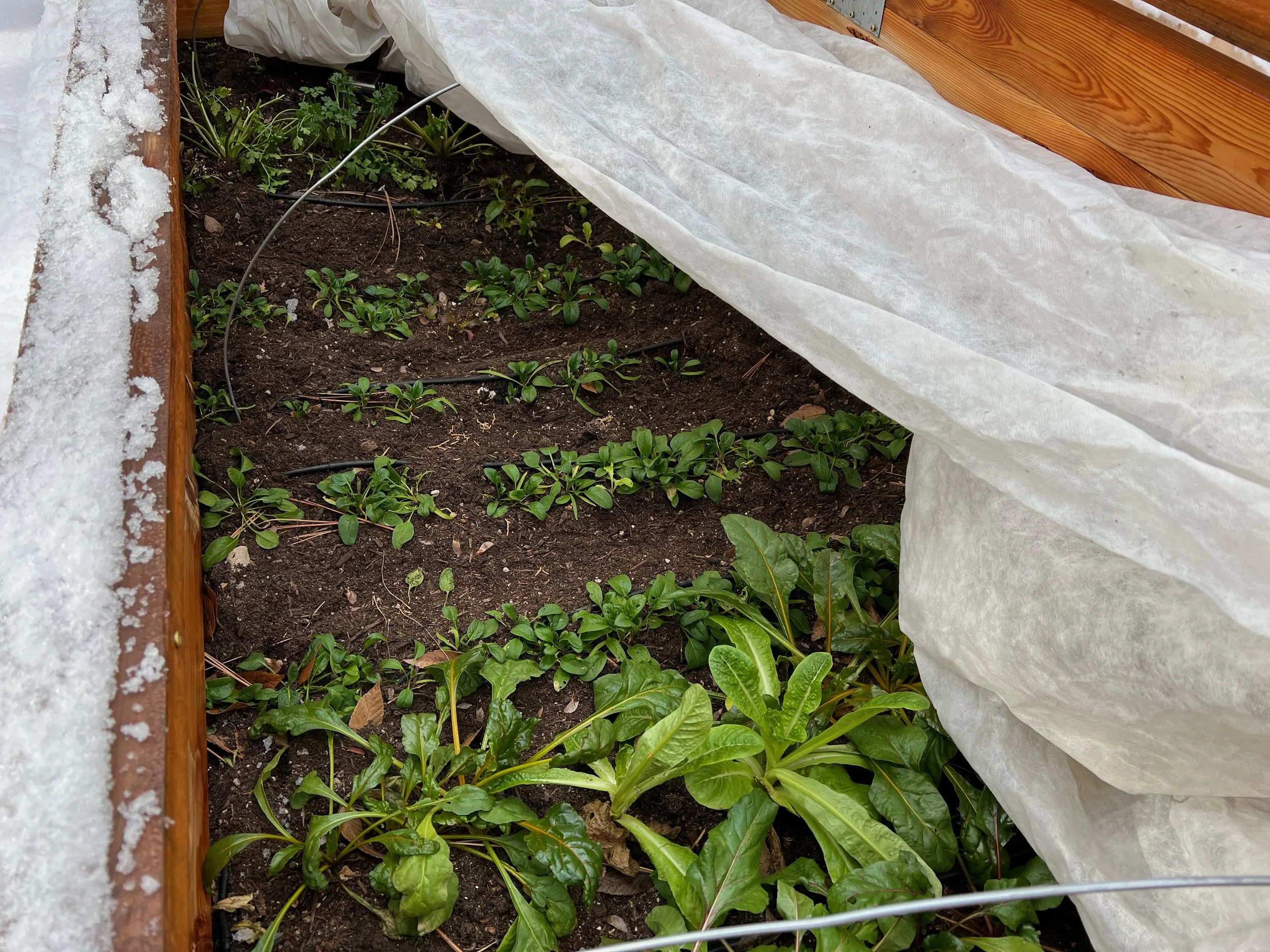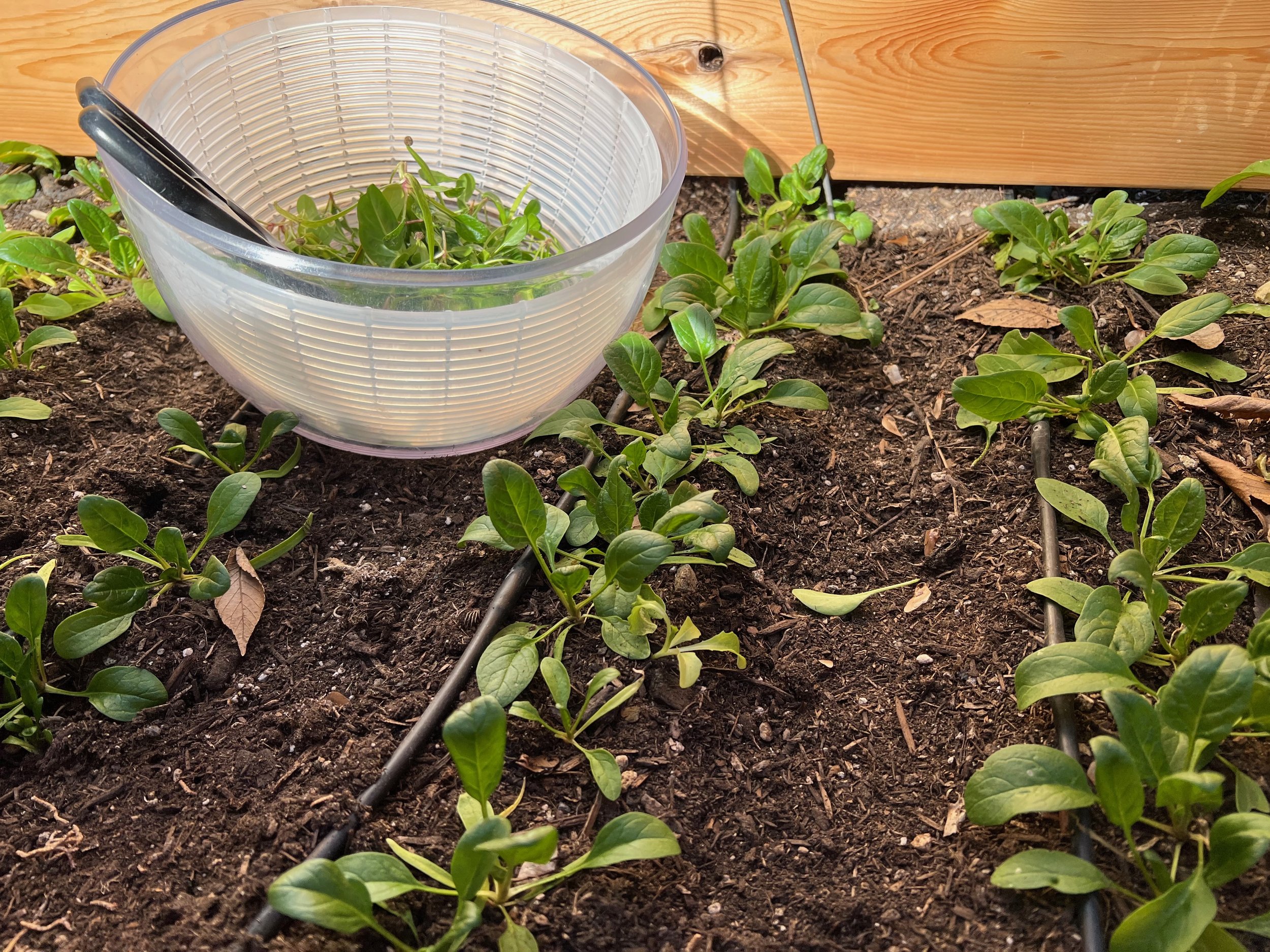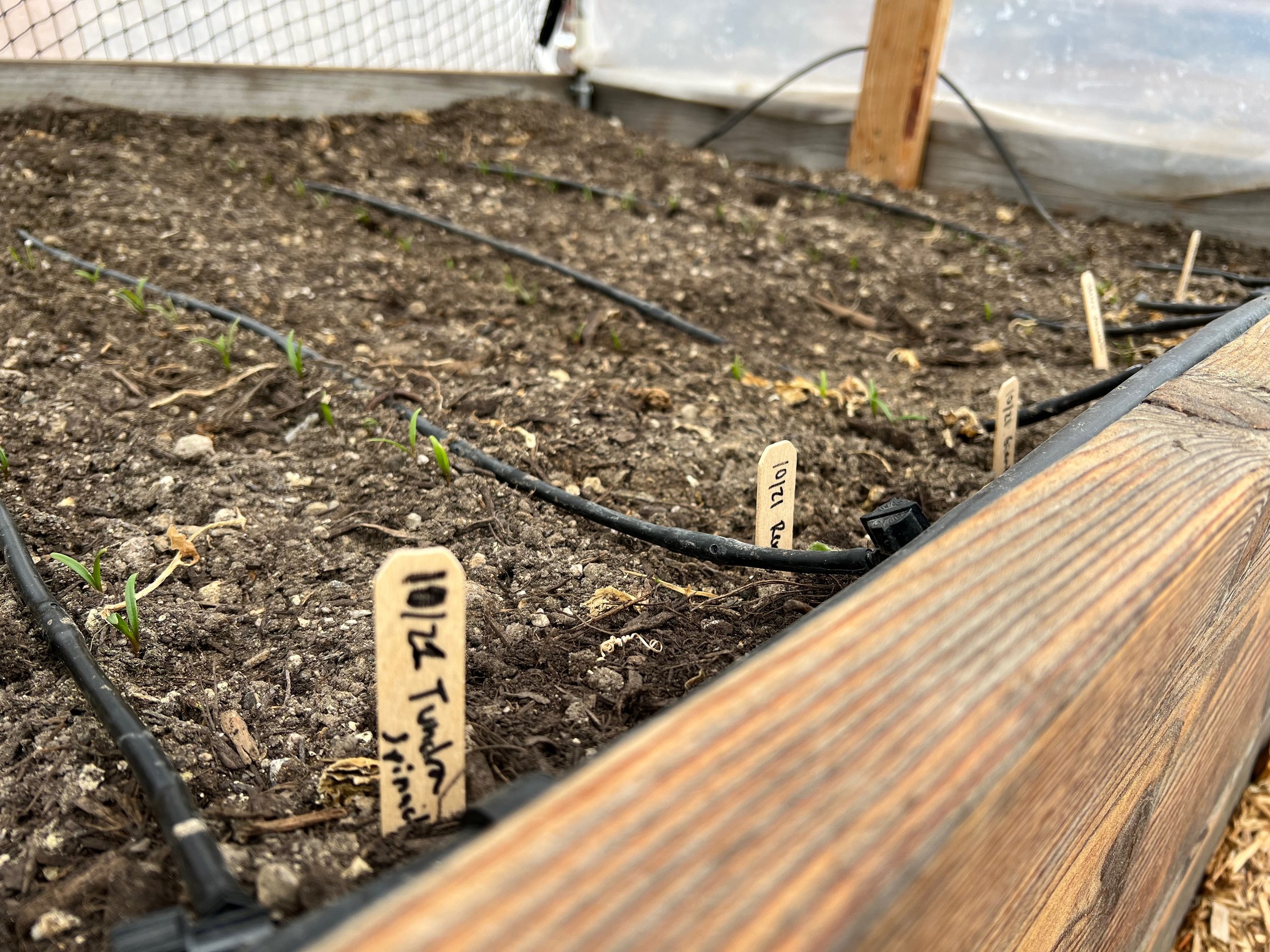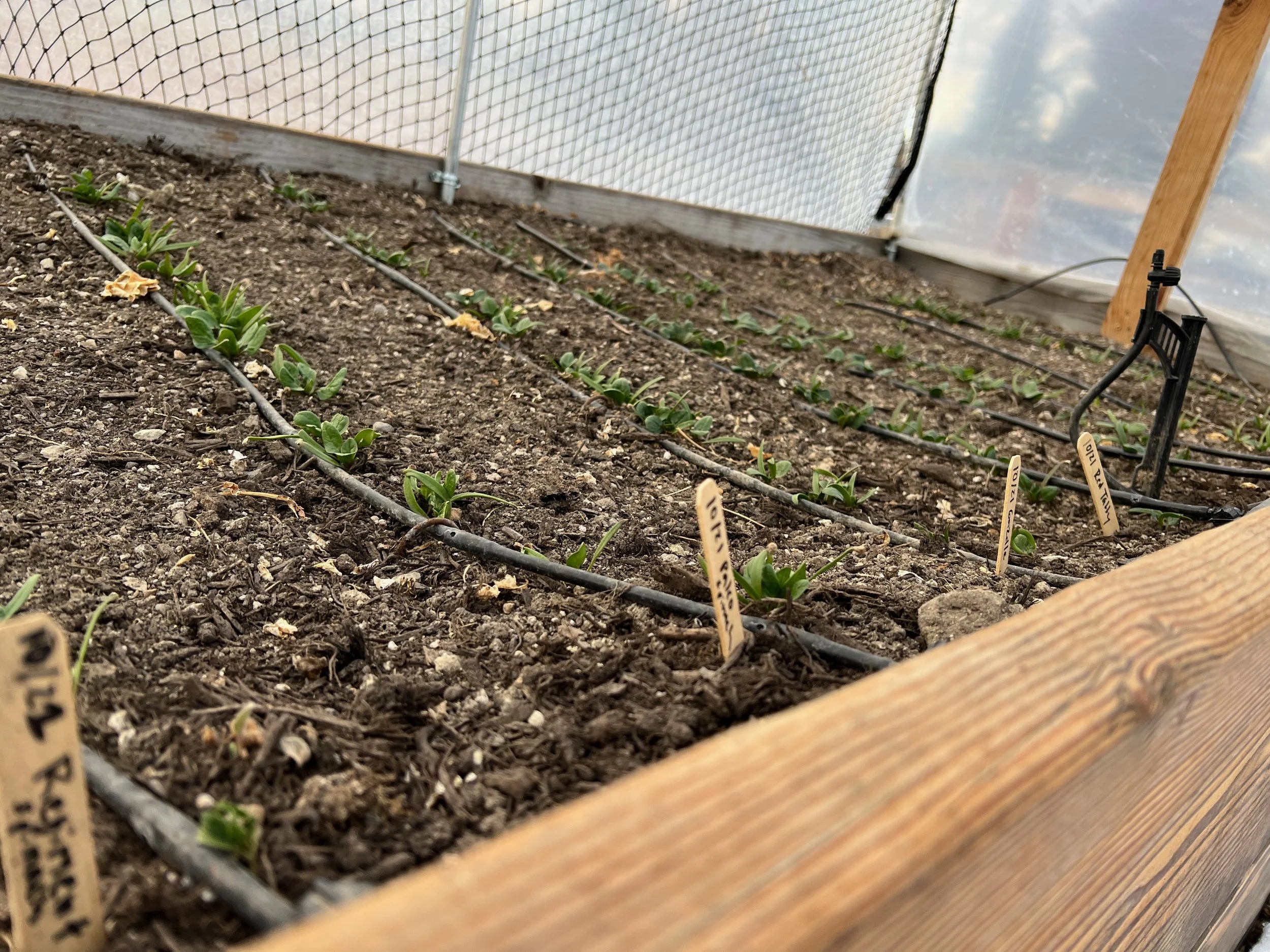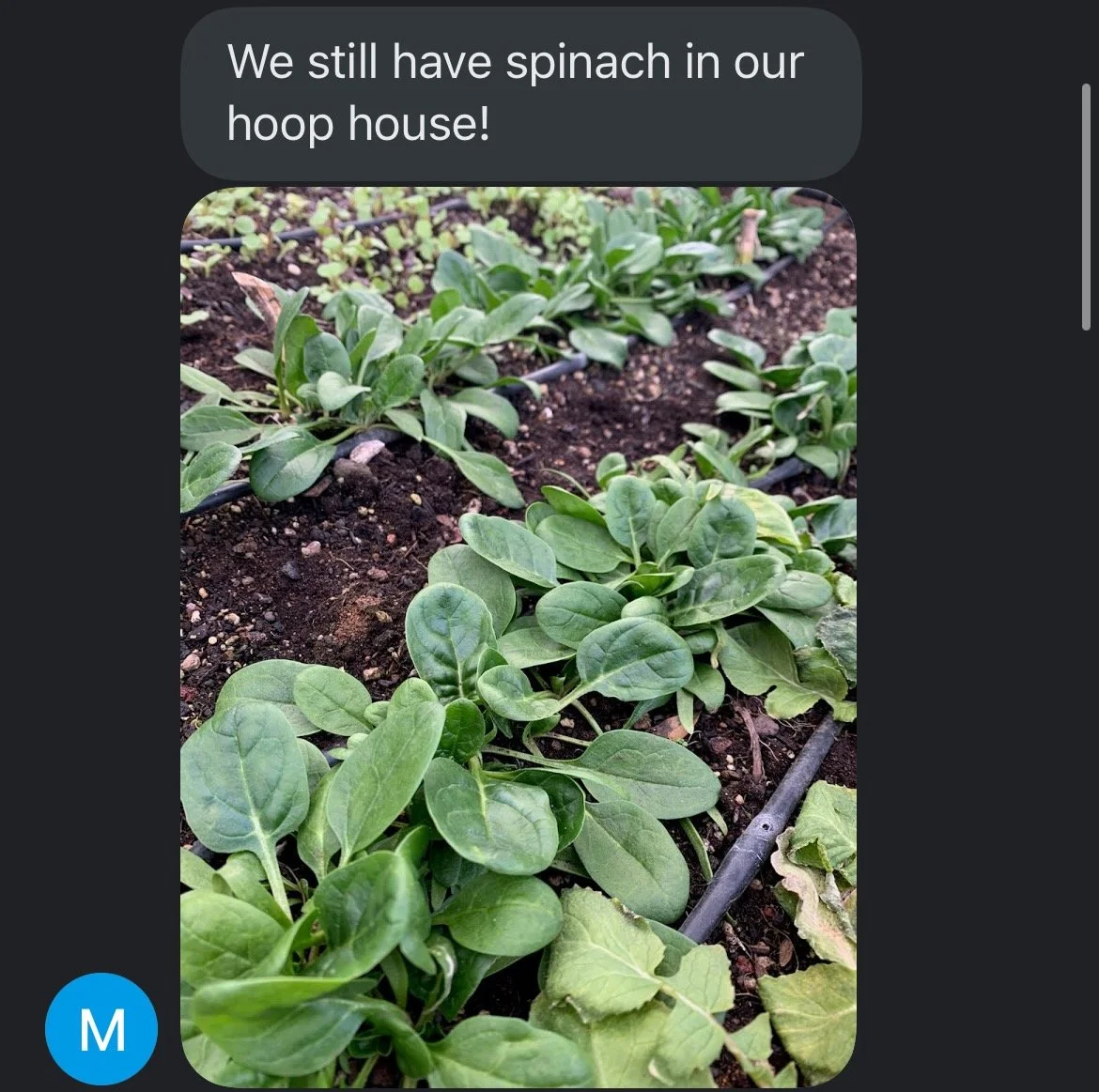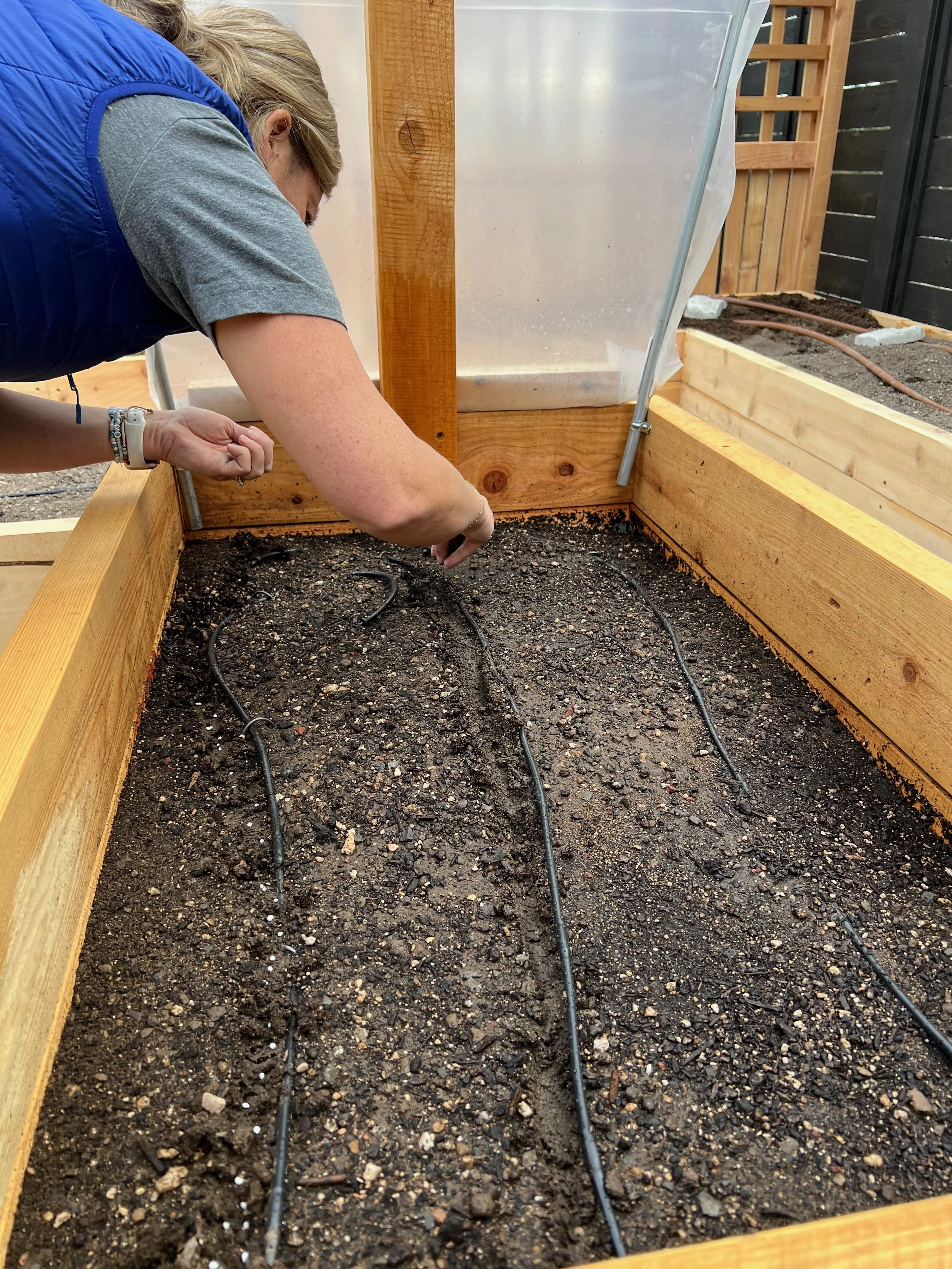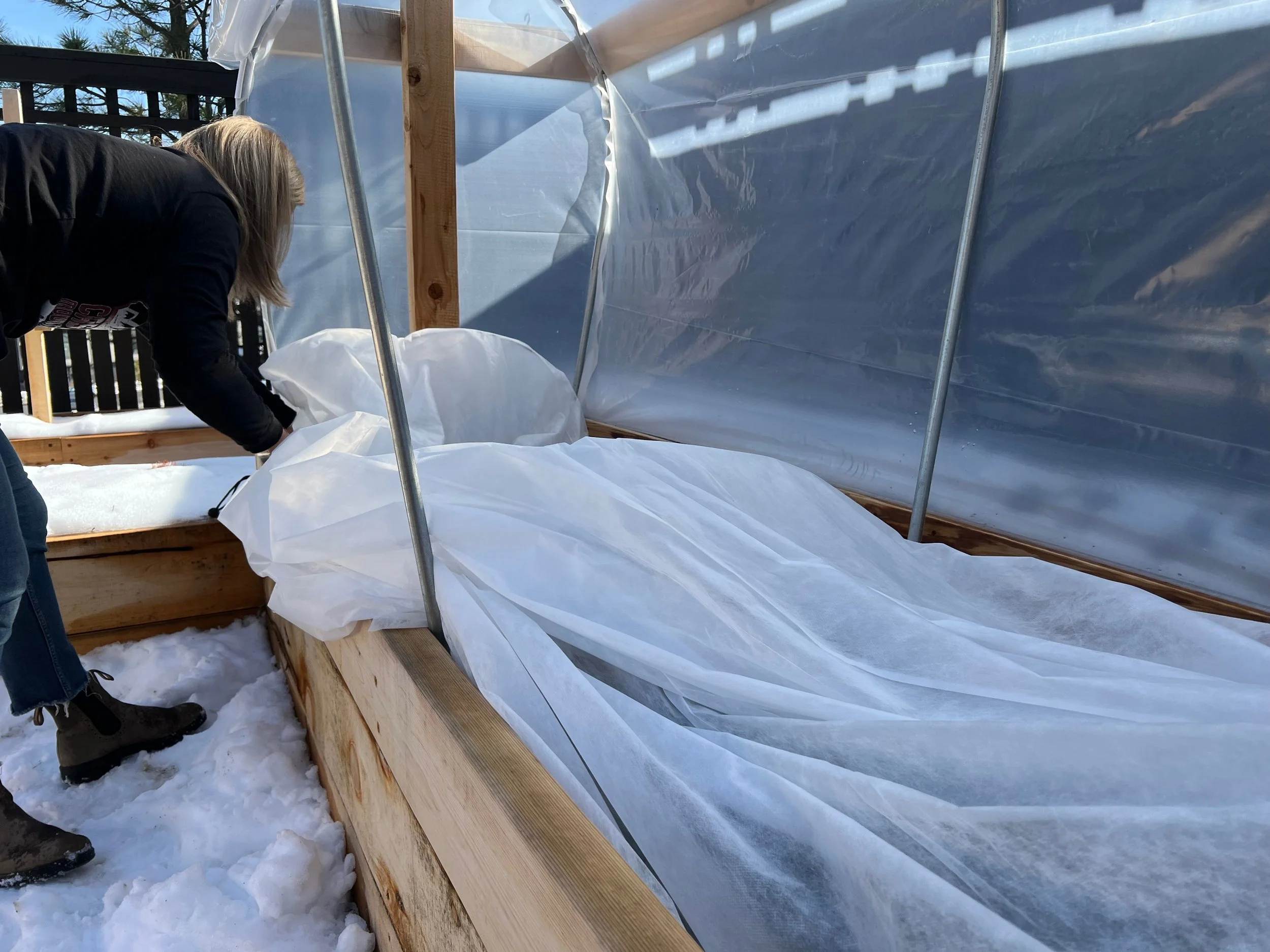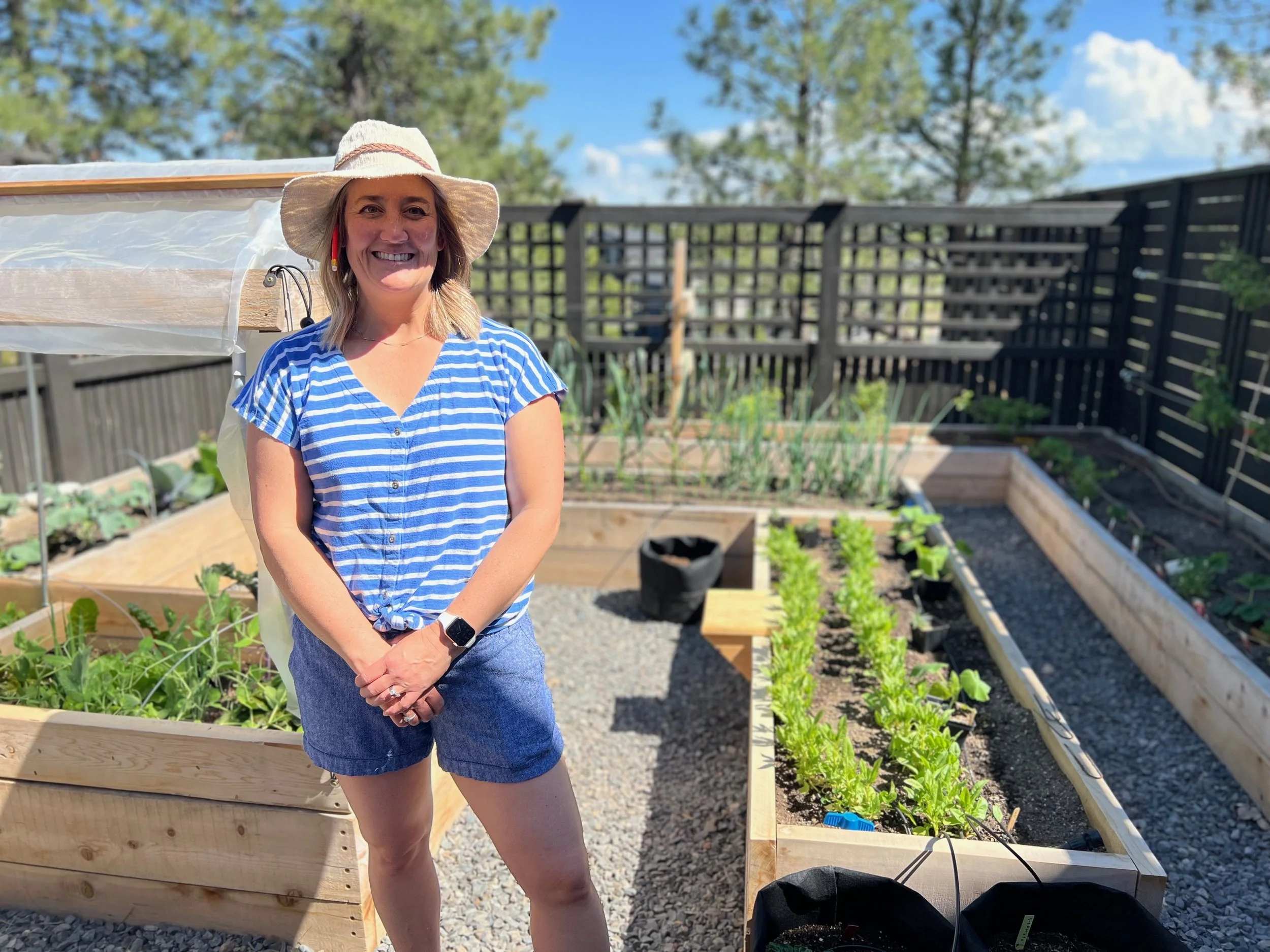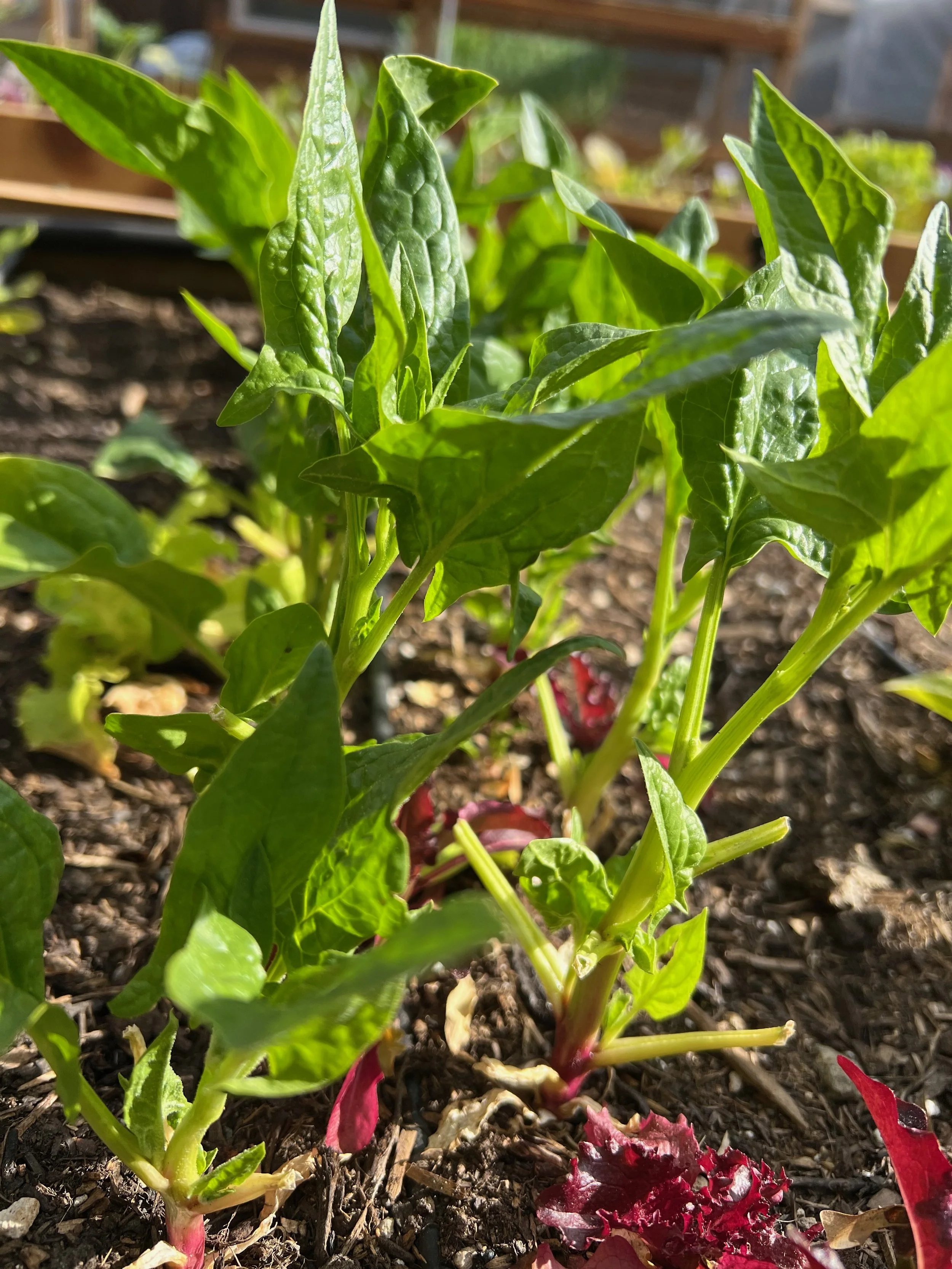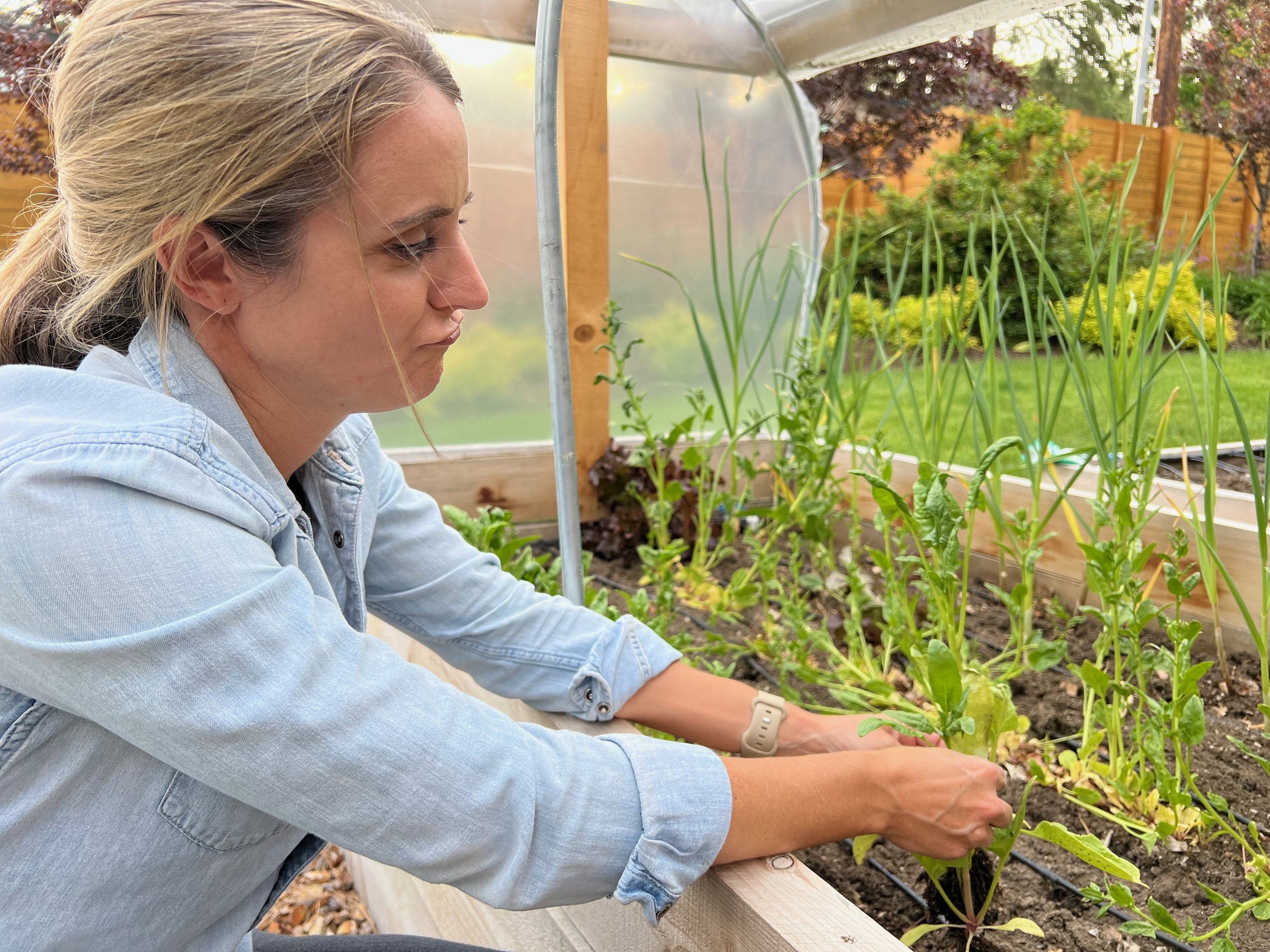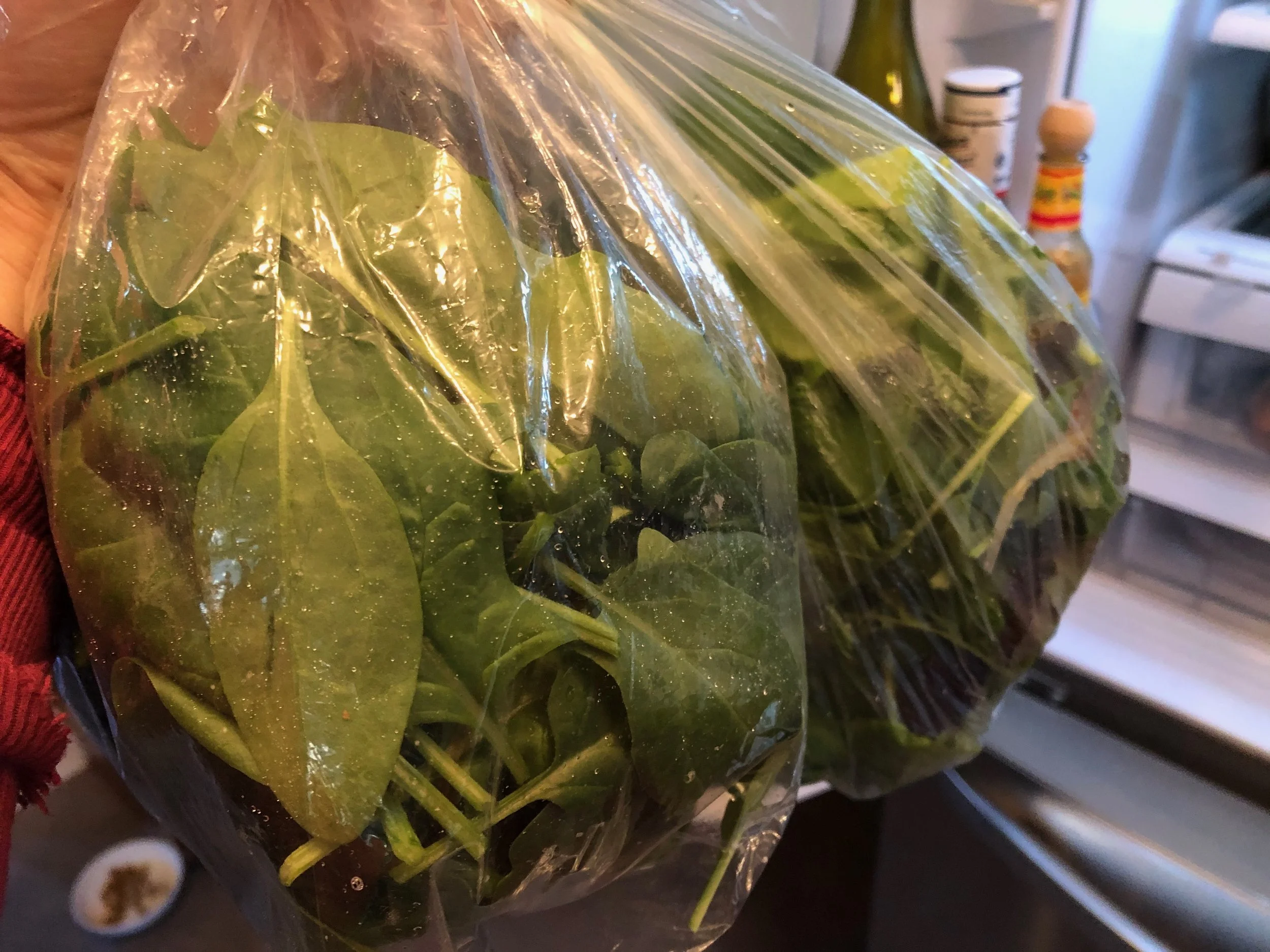Should I prioritize planting spinach in my garden?
Spinach is a short season crop that thrives in Central Oregon gardens as it reaches maturity and often gives you multiple harvests within 60 days. It also loves cool weather. We appreciate that spinach can be used in such a wide range of dishes, from salads and smoothies to egg scrambles and lasagna. It’s an excellent source of vitamins A, C, and K, as well as iron, calcium, and potassium. It also contains a range of other beneficial compounds, such as antioxidants and fiber.
Like any garden grown veggie, you can enjoy it at its peak freshness and flavor when you eat it soon after harvesting it. Most of our BUG gardeners agree that spinach picked straight from the garden is so much more flavorful than spinach that has been sitting on a grocery store shelf for days. Buying fresh organic spinach at the grocery store can be expensive, but growing your own can be a cost-effective way to enjoy this nutritious vegetable. Plus, reduce the need for transporting spinach greens and for all of those non-recyclable clam shells.
We sow savoy and semi-savoy (or more crinkly leaf) spinach directly into our outdoor garden soil in mid-August through mid-October since it tends to be the hardiest for winter. We then switch to smooth leaf varieties for our spring sowings since we find that the leaves are easier to clean and we prefer smooth baby leaf spinach for eating raw in spring salads. We sow our spinach seed in rows about 8” apart and ignore the seed packet spacing recommendations, sowing seeds about 1” apart and then thinning plants later if we get great germination and plants are in too much competition with one another.
The spinach seed that is sown later in the fall basically has enough time to germinate and then just hold in the garden. We opt to sow it in October instead of waiting until spring to give it a head start. Plus, spinach is a great crop to plant after we clear our tomatoes, peppers, and cucumbers out of our raised beds in October, keeping our garden in constant production (after amending with compost, of course). Our late summer and fall spinach sowings feed us in February through April when we don’t have much else coming out of the garden besides other cold hardy leafy greens like mache (aka corn salad) and claytonia (aka miner’s lettuce).
August sown spinach typically reaches maturity in Central Oregon before it gets too dark and cold for the plants to put on much more growth by November. We’re able to eat off of it until then. The leaves that aren’t harvested just hang out on our plants through winter. With the protection of our row cover/frost cloth, cold frames and mini hoophouses, we enjoy spinach harvests throughout winter, harvesting on sunny days when the plants have a chance to thaw out instead of harvesting frozen, mushy leaves. Our plants then hang out until they start getting enough daylight to continue growing again in late winter. Don’t worry about watering your spinach plants over winter while they are dormant. Get out your watering can or garden hose (disconnect it from your hose bib after using it) and give your plants a little drink once the soil starts thawing in the late winter/early spring. You’ll know when it’s time as the soil will be dry down at their root zone.
The spinach in these photos was direct sown on October 23rd and covered with a mini hoophouse and frost cloth until mid-April when the hoophouse was removed to warm up soil in another raised bed. It yielded many cuttings until it got too hot in early June.
Spinach seed can germinate when the soil temperature is as low as 45 degrees. So, we typically start sowing spinach seed in our greenhouse raised beds in early February just as our day length returns to 10 hours. Then, we wait until our soil thermometer consistently reads 45 degrees for a few mid- mornings in a row to sow another planting, or succession, of spinach in our outdoor raised beds topped with mini hoophouses, typically by mid-April. This allows us to stagger our harvests and have a consistent supply through the spring once it gets too hot for spinach in our greenhouse. Our uncovered soil is usually thawed out by May and we can sow another round of spinach seed in early May. Sometimes we only get one cutting off of it because it gets heat stressed by June. Sometimes, we get more.
It's important to harvest spinach before the leaves become too large or start to yellow, as this can indicate that the plant is starting to bolt, or go through the next phase of its lifecycle and putting its energy into making seed. Once spinach starts to bolt, the leaves become tough and bitter. Heat triggers bolting, so that’s why we take a break from spinach for the summer months. Try growing heat tolerant, vining ‘New Zealand’ spinach in the summer months!
To harvest spinach, use a paring knife or kitchen scissors to cut the spinach leaves at the base of the plant, leaving 2-3 smaller young leaves to keep growing, allowing for additional harvests from the same plants. Expect to get one to three cuttings off of one sowing of spinach seeds. After harvesting, dunk the leaves in cool water. We use our salad spinner, draining and rinsing a few times to remove any soil or debris. If we aren’t able to eat our harvest right away, we store it in the fridge.
Still uncertain about how spinach could fit into your garden plan? Consider subscribing to our self-paced online crop planning course.

